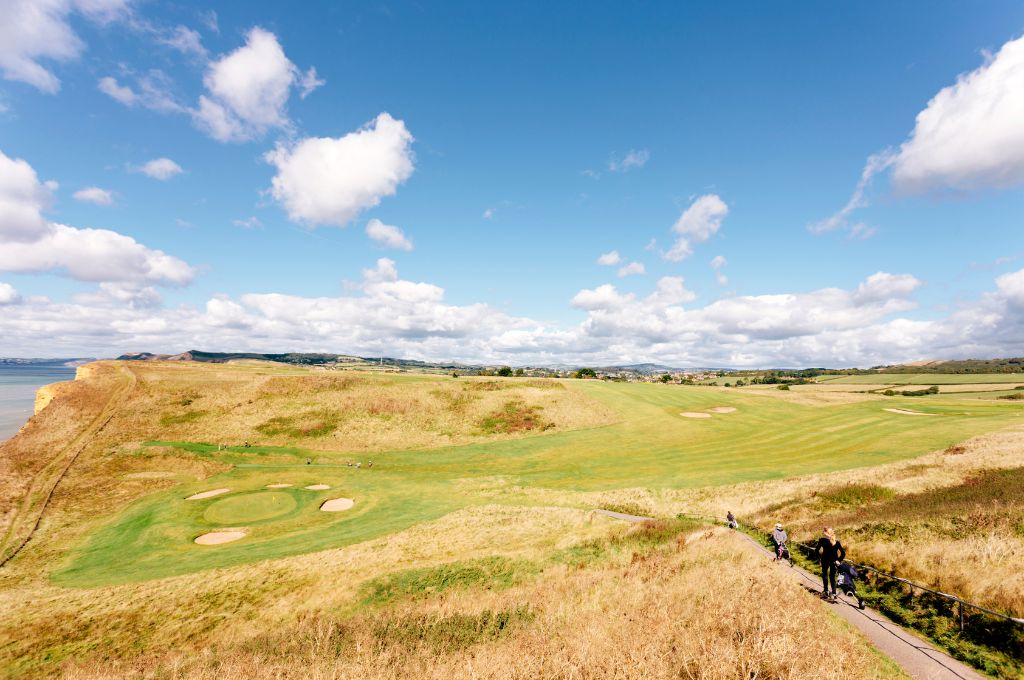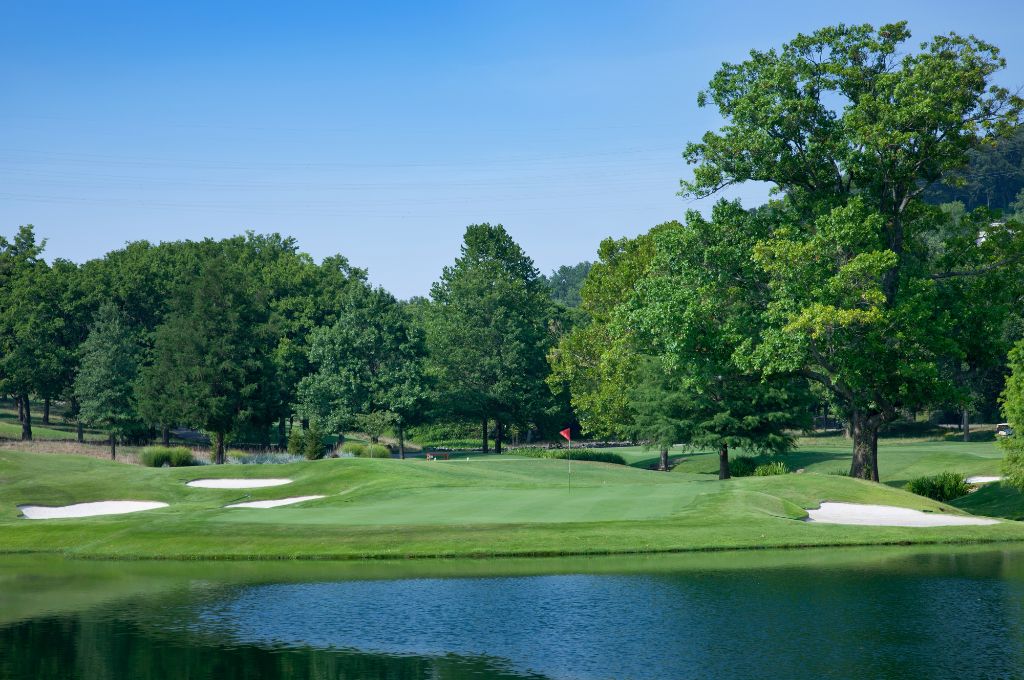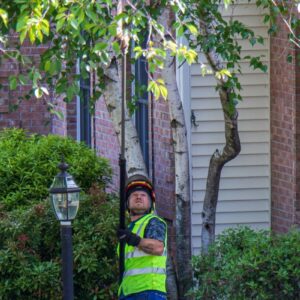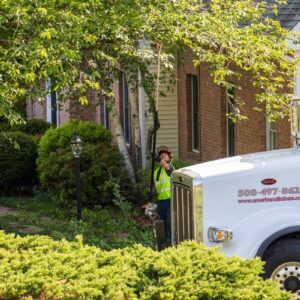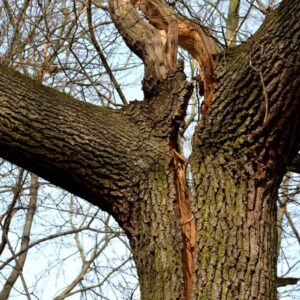As any golfer or golf course manager knows, there are positives and negatives to trees on golf courses. Trees have functional purposes and add beauty to the landscape, but they can require a lot of maintenance and care.
In this article, we’ll cover some of the specific tree care required for trees on golf courses, a bit of the history of golf (and trees), some of the benefits of golf course trees, and why working with an arborist can make managing those trees easier.
Why do Golf Courses Have Trees?
Golf Course in the UK
Not all golf courses have trees! In fact, when the first golf games were played in Scotland, they consisted of pebble and sand dunes. The land that linked the mainland and the sea was referred to as “links” and were usually a section of land between the farms and the beach. The dunes were formed by nature, and the game grew and evolved from there.
This tree-free version of golf, called “links golf,” is still the most common kind of golf played in Scotland and parts of England and is commonly a coastal location, is formed by nature, and tends to be very windy. Pebble Beach is one of the few examples of a link golf course in the United States.
Golf Courses in the US
The geography of the United States varies from state to state, but in general, the American landscape differs from that of the United Kingdom. When golf became popular here, it was created in more of a parkland style, which includes trees, waterways, and lawns. These features became the standard for United States golf courses.
Trees became an important aspect of the game. Trees give a sense of privacy and create separation on each hole. They also work to minimize noise, stop golf balls from traveling too far, provide visual interest to the course, add challenges, and make courses more distinct.
Trees and Turf: A Difficult Relationship
Despite the popularity of park-like settings on golf courses and elsewhere, trees and turfgrass do not naturally co-exist in the same space. When grass is shaded by trees, the grass dies out. Irrigation systems that water the lawns can create shallow root systems for trees, which can lead to toppled trees.
Lawn equipment such as mowers or trimmers can damage tree trunks if they get too close, causing wounds that are an invitation for pests and tree diseases.
Due to these issues, some parkland-style golf courses have made the extreme decision to remove all trees, leading to a very barren-looking property that doesn’t attract as many avid golfers.
Keeping in mind the difficulties of maintaining grass and turf, why should trees be kept and taken care of on golf courses?
Some of the Benefits of Trees on Massachusetts Golf Courses
There are many benefits to trees in general, and trees on golf courses can be beneficial for visitors and for the area overall.
Trees Provide Shade
Consciously or unconsciously, people seek out shady locations, especially during our hot and humid summers. Trees provide this shade, but they also bring down the air temperature around them, sometimes by as much as 10 degrees Fahrenheit!
Trees and plants also prevent an area from becoming a heat island or an area where heat is reflected instead of absorbed.
Trees Are Calming
Whether it’s the color (green is considered calming), the sound of a breeze through the leaves, the oxygen that trees create, or something else, being amongst trees has proven to lower stress levels. A method of immersing yourself in nature to reap the benefits, called forest bathing, first started in Japan and has grown in popularity worldwide.
Doctors are prescribing time in nature to their patients because it can improve one’s mental and physical health.
Even viewing trees from a distance is beneficial! Researchers compared patients' hospital rooms where the window faced a wall to those in rooms that faced trees. Those in the tree-facing rooms had, overall, shorter recovery times than those that faced a wall.
Trees Define a Golf Course
Trees act as a natural boundary for golf course fairways. They define the area, provide privacy, and act as a sound barrier. Trees can also protect people, cars, and property from damage due to wayward golf balls.
An inviting and well-maintained tree-lined golf course can encourage golfers to strategically plan how to approach each hole.
In contrast, a bare, overgrown, or dying area of trees can cause frustration or negatively impact a golfer’s visit.
Why Should Golf Courses Work with a Tree Care Company?
To help a golf course thrive and attract visitors, removing all trees is not recommended. Keeping the playability of a course without losing the benefits of trees is only possible when working with a tree professional.
A tree company with arborists on staff will not only take care of and maintain trees, but they will also know the best trees to plant, how to prevent costly and time-consuming issues, and how to prevent future problems.
Tree care companies such as American Climbers can save golf course management time, money, and frustration by:
Understanding How Trees will Grow
An arborist will know the correct tree for every situation, what plants work together, and what trees need more water or sun to thrive. Do you need a fast-growing tree? A shorter tree? Ask a tree care professional.
Providing Proper Pruning to Prevent Storm Damage
Damaged or dead tree limbs can become dangerous, especially during storms. Preventive pruning and maintenance can prevent some tree damage, minimizing potential liability risks.
Learn more about proper pruning to prevent storm damage.
Providing Proper Pruning to Allow Sunlight
Pruning a tree correctly to thin out the canopy while maintaining the tree’s structure and stability is a learned professional skill. Doing so properly will allow sunlight to reach the grass below, leading to healthier turf.
Maintaining Tree Roots
When tree roots break the surface, they can injure golf course lawns. With a tree management program, an arborist can help you choose trees that won’t have root issues and can manage any root-related issues with existing trees.
Handling Tree Work That Needs Experience and Equipment
Tree care workers have one of the most dangerous professions in the country, but those at professional tree care companies, like American Climbers, are highly skilled at safety procedures. Having the proper equipment, such as cranes, bucket trucks, log trucks, climbing equipment, personal protective gear, and more, also makes a difference when getting tree care job tasks done efficiently and safely.
Rather than golf course management assuming the costly insurance and training requirements of doing tree work in-house, it is safer and more cost-effective to outsource these tasks to a professional tree care company.
Ensuring Quality Care
An arborist will be able to recommend the right tree for the right place, ensuring that the golf course has the right number of high-quality, cared-for trees rather than many dying or dangerous trees.
Removing Trees with Precision
When a tree needs to be removed, an arborist has the equipment, skills, experience, and team for professional tree removal that minimally impacts the surrounding area.
American Climbers has years of experience removing trees, including trees in confined or small areas.
Contact American Climbers Today
While some arborists are used to dealing with homeowners’ properties and trees, others are specially trained (and have experience) in dealing with the unique challenges that a golf course can provide. American Climbers is proud to offer both and has experience in balancing the needs, safety, and comfort of your guests with the health of the surrounding trees.
Contact American Climbers to learn how we can maintain the trees on your golf course.
Blog Topics
Recent Posts
What's Happening? Stay Informed!
Stay on top of local events, pest and disease updates, tree and landscape tips, and more. Delivered straight to your inbox each month.

